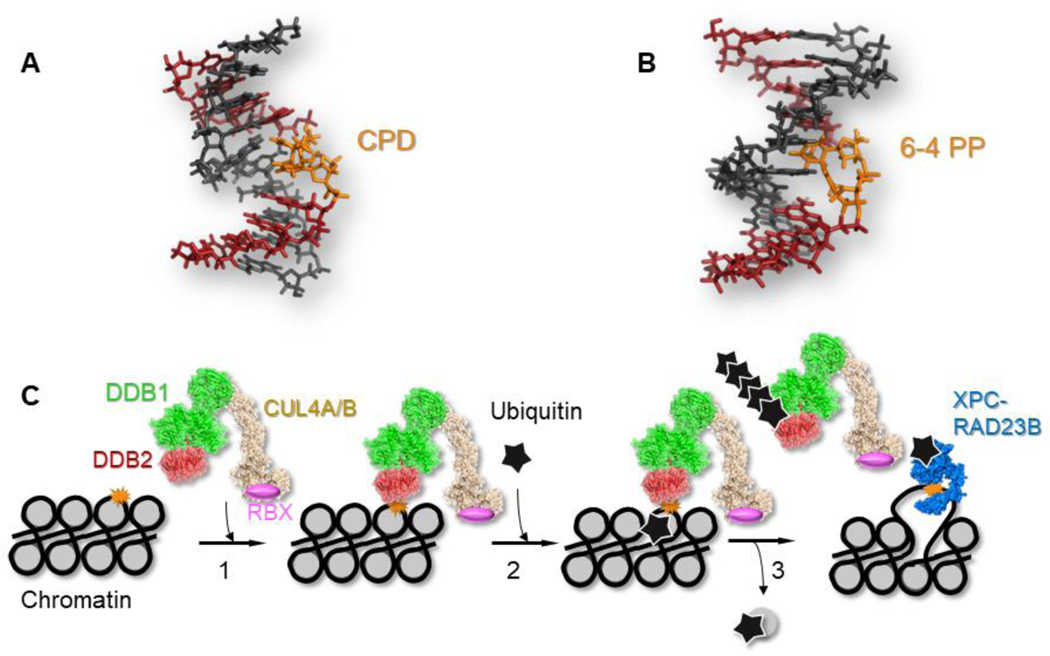Fig. 1.
Canonical role of UV-DDB in global genome nucleotide excision repair of UV-induced photoproducts. Two major UV-induced photoproducts, (A) cyclobutane pyrimidine dimer (CPD), PDB code: 1N4E; and (B) 6–4 pyrimidine-pyrimidone product, (6–4PP), PDB code: 3EI1. (C) UV-DDB (DDB1, green; DDB2, red) forms a complex with CUL4A (tan) and RBX (pink) to form an E3 ubiquitin ligase. Step 1, the UV-DDB-CUL4A-RBX complex- E3 ligase (PDB code: 4A0K, [54]) recognizes UV-induced photoproducts (orange) in the context of chromatin. Step 2, the E3 ligase ubiquitinates (black star) histone H2A. Step 3, the ubiquitinated nucleosome is evicted, and DDB2 is auto-poly-ubiquitinated decreasing its binding affinity for the UV-photoproduct, [30], allowing the recruitment of XPC (blue), which is mono-ubiquitinated stabilizing its interaction with the UV-photoproduct.

